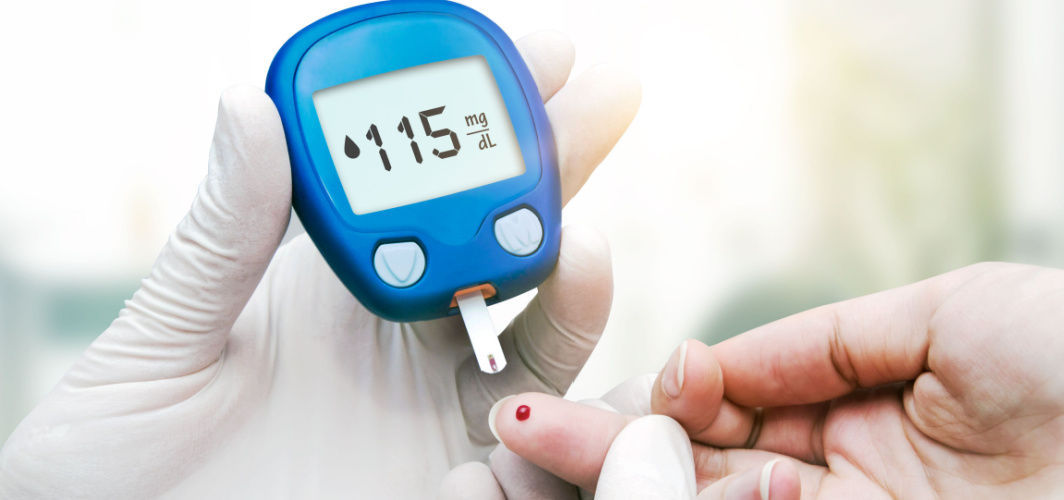Diabetes Management
Tips for Maintaining Healthy Blood Sugar Levels in Winter
2 min read
By Apollo 24|7, Published on - 27 November 2023, Updated on - 11 December 2023
Share this article
0
0 like

As the winter chill sets in, it brings potential challenges for individuals navigating with managing their blood sugar levels. Cold weather can affect blood sugar regulation, making it crucial to adopt mindful habits for winter wellness. Here are some useful tips to help you maintain healthy blood sugar levels during the colder months.
1. Stay Active Indoors
Winter often discourages outdoor physical activity, but staying active is vital for blood sugar control. Engage in indoor exercises like yoga, Pilates, or home workouts to keep your metabolism active. Even short bursts of activity throughout the day can make a significant difference.
2. Choose Seasonal, Low-Glycemic Foods
Embrace the winter harvest by incorporating seasonal, low-glycemic foods into your diet. Opt for root vegetables, leafy greens, and winter fruits like citrus, berries, and apples. These foods release glucose slowly, helping to maintain stable blood sugar levels.
3. Hydrate Effectively
The cold weather may reduce our sensation of thirst, but staying hydrated is crucial for blood sugar management. Choose warm herbal teas, infused water, and broths to keep yourself hydrated. Limit sugary beverages and opt for water or beverages with artificial sweeteners in moderation.
4. Mindful Carbohydrate Consumption
Be mindful of carbohydrate intake, as winter comfort foods can sometimes be high in refined carbohydrates. Choose whole grains, legumes, and fiber-rich foods to help regulate blood sugar. Balance your plate with a mix of carbohydrates, proteins, and healthy fats.
5. Monitor Vitamin D Levels
Winter often means less exposure to sunlight, which can impact vitamin D levels. Vitamin D plays a role in insulin sensitivity, so consider supplements or include vitamin D-rich foods like fatty fish, fortified dairy, and mushrooms in your diet.
6. Prioritise Sleep
Quality sleep is essential for overall health, including blood sugar regulation. Establish a consistent sleep routine, create a comfortable sleep environment, and avoid screen time before bedtime to promote restful sleep.
7. Regular Blood Sugar Monitoring
Monitor your blood sugar levels regularly, especially during the winter months when changes in routine and diet are common. This helps you make timely adjustments to your diabetes management plan, ensuring stability.
Conclusion
Winter should be a season of warmth and joy, and with these health bites, individuals managing blood sugar levels can navigate the colder months with confidence. By adopting mindful habits, staying active, and making smart food choices, you can maintain a healthy balance and enjoy the winter season to the fullest while safeguarding your well-being.
You can also try the Apollo 24|7 Diabetes Self-Management Tool to log your sugar values, track patterns, know all about food nutrition and more.
Diabetes Management
Consult Top Diabetologists
View AllLeave Comment
Recommended for you
.jpg?tr=q-80)
Diabetes Management
Spices for Diabetes: Flavorful Blood Sugar Control
Spices are not just flavour enhancers but can also aid in managing diabetes. Including spices like cinnamon, ginger, and fenugreek can help regulate your blood sugar levels. However, consulting a doctor before making any dietary changes is imperative. Incorporating lifestyle modifications along with a balanced diet can go a long way in managing diabetes, so consider enrolling in the Apollo Super programme and learn to manage diabetes holistically.

Diabetes Management
Mindful Wound Care for Diabetic Individuals
Slow wound healing can be a significant challenge for diabetics, but the right care can change this. Some ways to promote healing include regular foot checks, maintaining optimal blood sugar levels, proper wound cleaning and dressing, relieving pressure on wounds, and seeking medical attention.

Diabetes Management
Type 2 Diabetes: Is It Curable?
Diabetes is a chronic illness in which the body cannot process blood sugar. There are two types of diabetes - type 1 and type 2. Though type 1 diabetes has no cure, you can reverse type 2 with treatment and lifestyle modifications.
Subscribe
Sign up for our free Health Library Daily Newsletter
Get doctor-approved health tips, news, and more.
Visual Stories

8 Fruits That are Incredibly Healthy for Diabetes
Tap to continue exploring
Recommended for you
.jpg?tr=q-80)
Diabetes Management
Spices for Diabetes: Flavorful Blood Sugar Control
Spices are not just flavour enhancers but can also aid in managing diabetes. Including spices like cinnamon, ginger, and fenugreek can help regulate your blood sugar levels. However, consulting a doctor before making any dietary changes is imperative. Incorporating lifestyle modifications along with a balanced diet can go a long way in managing diabetes, so consider enrolling in the Apollo Super programme and learn to manage diabetes holistically.

Diabetes Management
Mindful Wound Care for Diabetic Individuals
Slow wound healing can be a significant challenge for diabetics, but the right care can change this. Some ways to promote healing include regular foot checks, maintaining optimal blood sugar levels, proper wound cleaning and dressing, relieving pressure on wounds, and seeking medical attention.

Diabetes Management
Type 2 Diabetes: Is It Curable?
Diabetes is a chronic illness in which the body cannot process blood sugar. There are two types of diabetes - type 1 and type 2. Though type 1 diabetes has no cure, you can reverse type 2 with treatment and lifestyle modifications.
